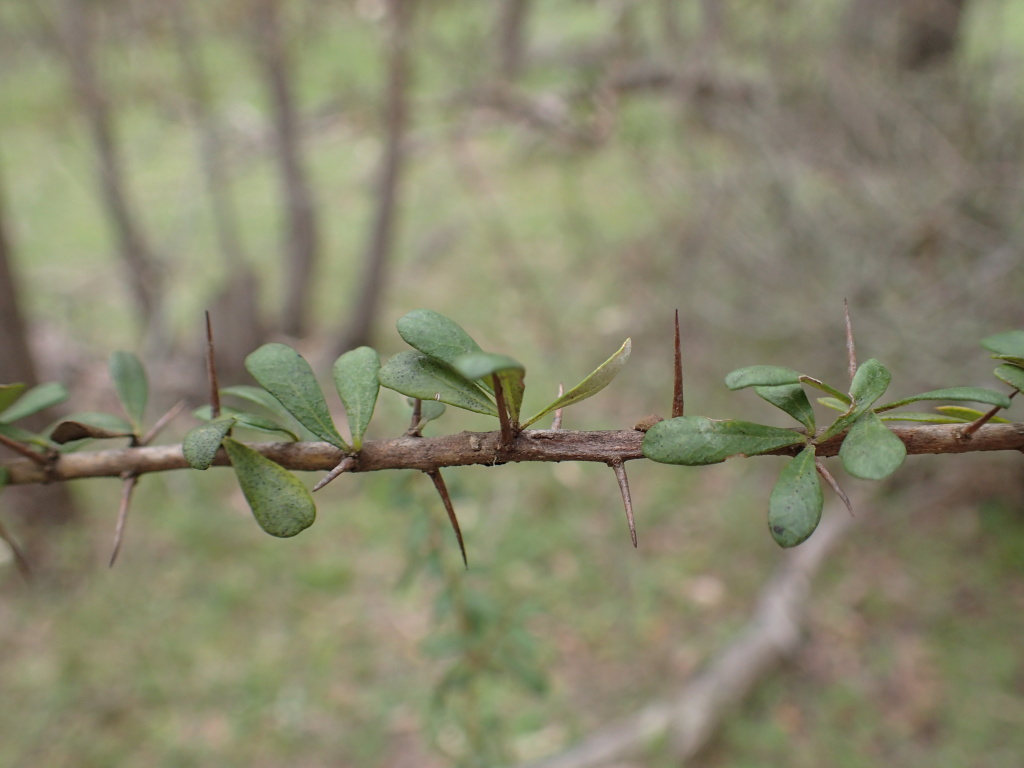Bursaria spinosa subsp. lasiophylla
(E.M.Benn.) L.Cayzer, Crisp & I.TelfordShrub c. 0.5–3 m high; branches variably spinescent, spines usually c. 1 cm long, young stems pubescent. Leaves alternate, those subtending spines often clustered, narrowly to broadly obovate, 4–30 mm long, 2–10 mm wide, entire, rarely shallowly toothed, thickish, glabrous or glabrescent on upper surface, densely white, grey or yellowish beneath. Inflorescence a slender to pyramidal panicle usually c. 3–10 cm long, up to c. 8 cm wide; flowers white or cream; sepals triangular to ovate, 0.5–2 mm long, caducous; petals narrowly obovate, c. 3–6 mm long; stamens subequal to petals; ovary glabrous or pubescent. Capsule obovate to broadly obovate, 4–7 mm long, 5–8 mm wide, brown, finally glabrous; seeds reniform, brown, flat, c. 3–4 mm long. Flowers Nov.–Feb.
Wim, VVP, VRiv, Gold, CVU, GGr, NIS, EGU, HSF, HNF, MonT, VAlp. Also SA, NSW, ACT. Somewhat disjunct distribution in western and eastern Victoria, largely confined to dry rocky sites in open forest and shrublands, rarely entering alpine areas (e.g. Snowy Bluff).
Previously treated as a distinct species with several weakly defined varieties.
Walsh, N.G.; Albrecht, D.E. (1996). Pittosporaceae. In: Walsh, N.G.; Entwisle, T.J., Flora of Victoria Vol. 3, Dicotyledons Winteraceae to Myrtaceae, pp. 526–539. Inkata Press, Melbourne.
 Spinning
Spinning


